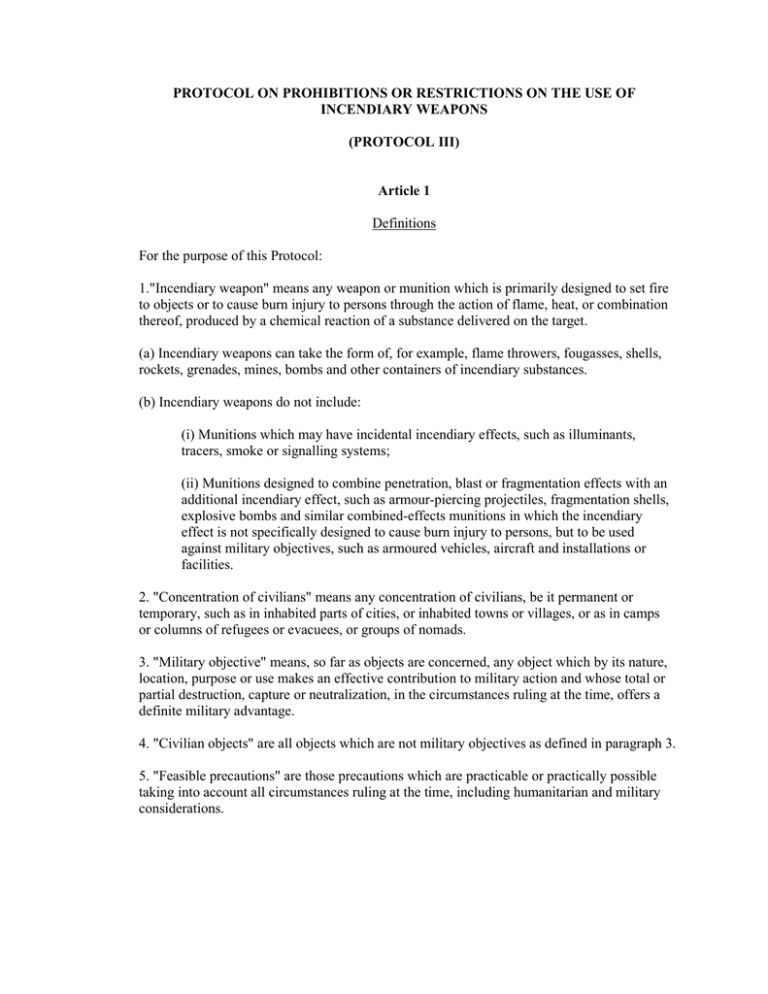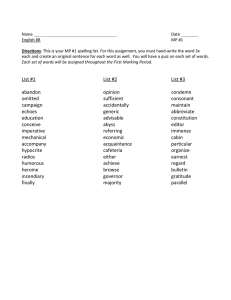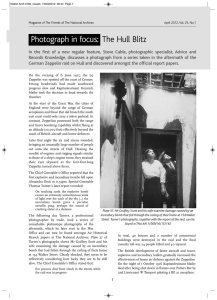PROTOCOL III
advertisement

PROTOCOL ON PROHIBITIONS OR RESTRICTIONS ON THE USE OF INCENDIARY WEAPONS (PROTOCOL III) Article 1 Definitions For the purpose of this Protocol: 1."Incendiary weapon" means any weapon or munition which is primarily designed to set fire to objects or to cause burn injury to persons through the action of flame, heat, or combination thereof, produced by a chemical reaction of a substance delivered on the target. (a) Incendiary weapons can take the form of, for example, flame throwers, fougasses, shells, rockets, grenades, mines, bombs and other containers of incendiary substances. (b) Incendiary weapons do not include: (i) Munitions which may have incidental incendiary effects, such as illuminants, tracers, smoke or signalling systems; (ii) Munitions designed to combine penetration, blast or fragmentation effects with an additional incendiary effect, such as armour-piercing projectiles, fragmentation shells, explosive bombs and similar combined-effects munitions in which the incendiary effect is not specifically designed to cause burn injury to persons, but to be used against military objectives, such as armoured vehicles, aircraft and installations or facilities. 2. "Concentration of civilians" means any concentration of civilians, be it permanent or temporary, such as in inhabited parts of cities, or inhabited towns or villages, or as in camps or columns of refugees or evacuees, or groups of nomads. 3. "Military objective" means, so far as objects are concerned, any object which by its nature, location, purpose or use makes an effective contribution to military action and whose total or partial destruction, capture or neutralization, in the circumstances ruling at the time, offers a definite military advantage. 4. "Civilian objects" are all objects which are not military objectives as defined in paragraph 3. 5. "Feasible precautions" are those precautions which are practicable or practically possible taking into account all circumstances ruling at the time, including humanitarian and military considerations. Article 2 Protection of civilians and civilian objects 1. It is prohibited in all circumstances to make the civilian population as such, individual civilians or civilian objects the object of attack by incendiary weapons. 2. It is prohibited in all circumstances to make any military objective located within a concentration of civilians the object of attack by air-delivered incendiary weapons. 3. It is further prohibited to make any military objective located within a concentration of civilians the object of attack by means of incendiary weapons other than air-delivered incendiary weapons, except when such military objective is clearly separated from the concentration of civilians and all feasible precautions are taken with a view to limiting the incendiary effects to the military objective and to avoiding, and in any event to minimizing, incidental loss of civilian life, injury to civilians and damage to civilian objects. 4. It is prohibited to make forests or other kinds of plant cover the object of attack by incendiary weapons except when such natural elements are used to cover, conceal or camouflage combatants or other military objectives, or are themselves military objectives. _____


![Vocabulary #4 – Periods 1, 3 and 5 [ ]](http://s2.studylib.net/store/data/017549894_1-25df38e95c5b4d4156c0e8a7f0d3f4f8-300x300.png)

